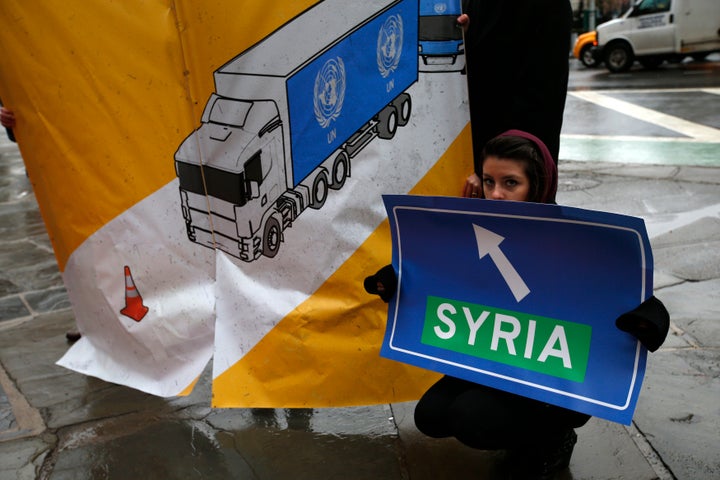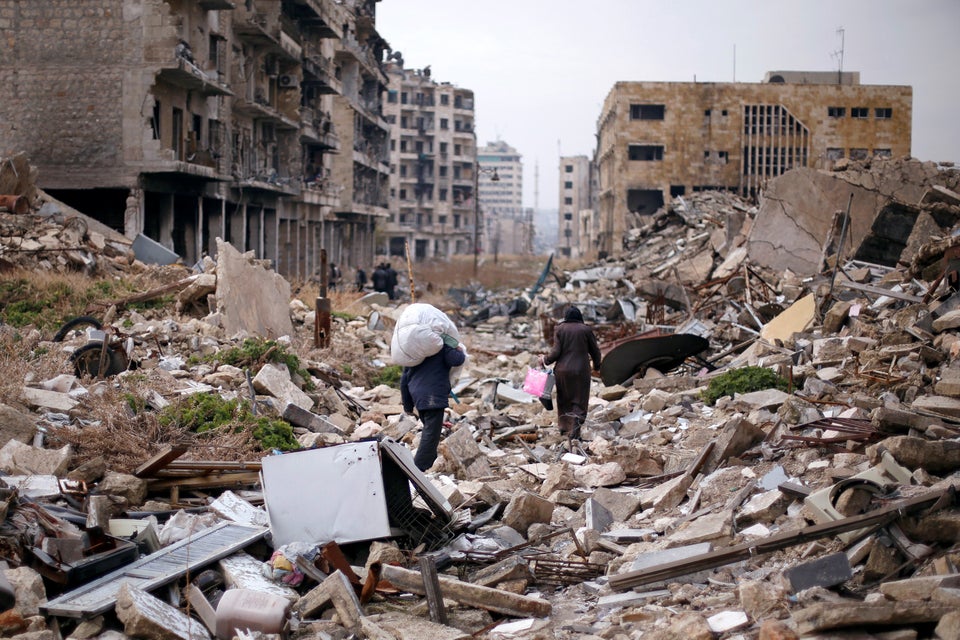As the war in Syria drags into its seventh year, civilians remain stuck in the crosshairs. President Bashar Assad harms his own people in ways that are sometimes overt and brutish, such as barrel-bombing entire neighborhoods in large cities like Aleppo. Other tactics are less violent, but they are just as destructive.
A Physicians for Human Rights study, released on Tuesday, found that Syrian authorities arbitrarily restrict vital United Nations humanitarian access to suffering civilians.
“Millions of Syrians are trapped in besieged and hard-to-reach areas, often surrounded by landmines and snipers, with no access to food, medical supplies, or services ― the vast majority imprisoned by Syrian government forces,” said the report titled “Access Denied.”
The government not only systematically blocks entrance to areas that it controls, but also arbitrarily places limits on the amount of aid that can be delivered, according to the study. As a result, people are dying from starvation and lack of medical care.
“It’s still so clear that this aid is not sufficient.”
- Elise Baker, researcher with Physicians for Human Rights
Physicians for Human Rights combed through U.N. reports from 2016 to determine how many people actually received aid each month compared to how many people the various humanitarian agencies requested access to, researcher Elise Baker told The Huffington Post.
“We wanted to add a narrative around the data the U.N. is already providing. It’s still so clear that this aid is not sufficient,” said Baker, the author of the report.
Take the Ezzadine family from Madaya, Syria. Their 11-year-old son, Yaman, was dying from meningitis, a curable disease, because he had zero access to medical care in the city under siege by the Assad regime. Several other family members also contracted the illness. They survived only because they were finally evacuated to Damascus.
The conditions in Madaya drew international outrage early last year after photos emerged of emaciated residents suffering from malnutrition and starvation.
The Assad government finally agreed to a new two-step approval process for U.N. aid deliveries in April 2016, the report said. And that helped. Last year, 131 U.N. convoys provided aid to more than 1 million people in besieged and hard-to-reach areas across Syria, according to the report.

But there are still major gaps in aid delivery, the study said. From May through December 2016, the Syrian government was refusing the U.N. access to one-third of the people in those areas on average.
“That left, on average, nearly 340,000 people without any hope of humanitarian aid each month, many for months on end,” the report said.
“You might have access approved but it’s not actually being completed,” Baker explained. “We really need to change the conversation and stop pretending like this new process is sufficient.”
Yaman Ezzadine is but one example of how the Assad government’s actions are harming children. Last year was the deadliest year on record for Syrian children since the war began in 2011, according to a UNICEF report released Monday. Almost 6 million children now depend on humanitarian aid, a twelve-fold increase from 2012.
Outraged by what’s happening in Syria? The Huffington Post put together a list of ways to support the innocent people suffering.


